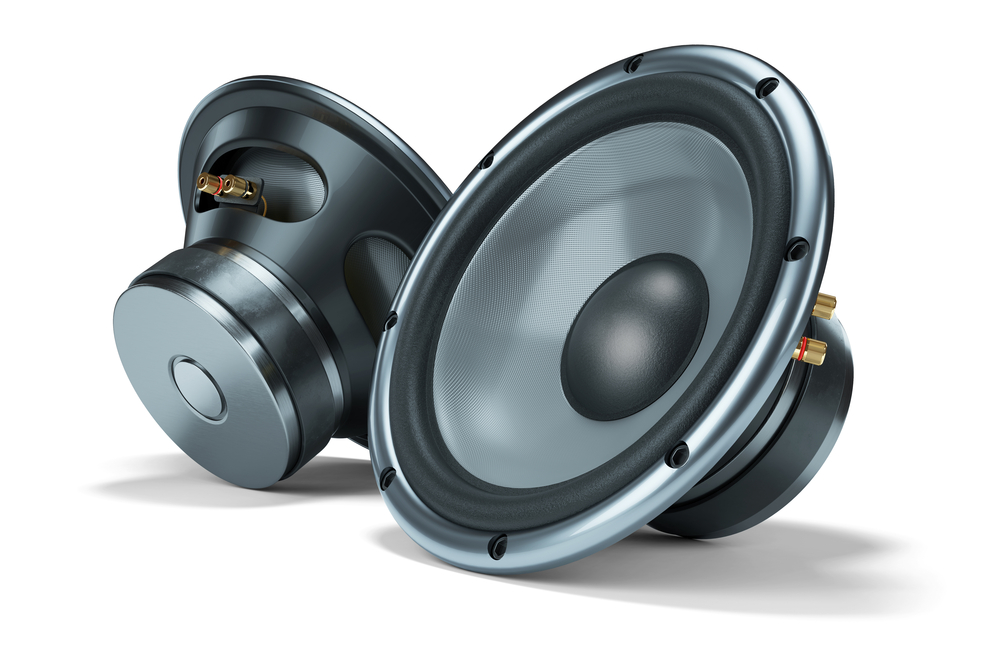Bluetooth headphones allow us to listen to our favorite music seamlessly without connecting wires. However, it’s not easy to find high quality headphones. There are many designs available that looking at the specification alone can make it more complicated. In this post we will discuss more about Bluetooth headphone driver units. The Bluetooth headphone driver unit is the component for creating sound.
What is a Headphone Driver Unit?
The work of the driver is to convert electrical signals into sound. In a nutshell, the driver creates the sound that you hear. The headphone driver is like a tiny loudspeaker in your ear. A headphone driver is made up of three components.
The magnet

This is responsible for creating a magnetic field. The performance of the magnetic field affects the sound quality. Most Bluetooth headphone drivers are made of ferrite or cobalt. However, stronger material can be used to make stronger magnets.
Voice coils
When electric current passes through the voice coil, the diaphragm moves to generate the sound you hear. Voce coils convert electrical signals into sound. They are made from a variety of material, not just copper, to increase the sound quality. These materials include PCOCC (Pure Copper By Ohno Continuous Casting) and Hi-OFC ( A type of oxygen free copper)
The Diaphragm
The diaphragm vibrates to produce sound waves. A diaphragm is a transducer that converts mechanical vibrations into sounds. It is made of a thin membrane and is suspended at its edges. When electricity vibrates the diaphragm, it beats against the air and creates sound waves.
The audio driver in headphones is shaped like a disc. The sizes of the headphone driver differ depending on the required sound output.
How Does a Headphone Audio Driver Impact the Sound?

The size of the audio driver affects the sound quality. Generally, larger headphone drivers produce better bass. However, it’s not always that headphones with larger drivers emit better sound than headphones with small drivers. Many factors come into play when it comes to sound quality of the headphones.
The diameter of a headphone driver is about 20mm and 50mm. The size determines the loudness of the headphone. However, there is a misconception that larger headphone drivers automatically produce better sound quality. This is not true.
Because a bigger headphone driver unit has a bigger diaphragm, the bass is a little better. However, larger headphone drivers have difficulty reproducing high frequencies. This means that although headphones with large audio drivers have the capability to generate louder sound, it doesn’t mean that they deliver better sound. The variation of materials inside the driver unit and other features affect the quality of sound. You have probably seen reputable companies manufacture tiny earbuds, with small headphone driver size but with better sound quality than headphones with larger drivers.
In some headphones, there is more than one audio driver to control the various frequency ranges. Although a single driver can emit sound between 20HZ and 20kHz, it has its disadvantages. This is why some headphones have multiple drivers. When there are multiple drivers, each driver concentrates on a particular range. But this does not mean that headphones with multiple drivers automatically have better sound quality. For instance, a headphone with two audio drivers but poorly built, won’t produce quality sound a well-built single driver headphone.
So, what should you look at instead of the driver size?
Consider the following three important things:
- The headphone driver unit enclosure
- Its tuning and
- The ear padding
Choose headphones with drivers made with high quality, flexible material that does not break at high power levels. Cheaper materials can’t withstand high power and easily distort or break. Additionally, the enclosure of the cup and the type of padding used has a greater impact on the sound quality than the size of the driver.
Types of Headphone Drivers
- Dynamic Drivers (Moving Coil Drivers)
These are the most common type and are available at relatively low prices. They use the concept of electromagnetism and magnetism to create movement. Dynamic drivers have three important components:-
- A voice coil
- A diaphragm attached to the voice coil and
- A neodymium magnet
This is how it works
The neodymium magnet turns the voice coil into an electromagnet. As a result, the diaphragm moves and displaces the air around it producing sound. High volume is a result of large air displacement. Because of their ability to displace air, dynamic drivers are good at creating a bass response. However, dynamic drivers have one main disadvantage. At high volume, they can distort audio.
- Planar Magnetic Drivers
Planar magnetic drivers are found in most open back over ear headphones. They are extremely thin and normally installed in high end headphones.
How do they work?
Planar magnetic drivers also utilize magnetic fields to produce sound. However, unlike in dynamic drivers which trigger the voice coil, the magnetic field directly activates the diaphragm to produce sound. They have large or more magnets because the entire diaphragm must be evenly vibrated. This makes the headphones heavy and not portable. The y may also need extra power from the audio source. Alternatively you may be required to buy an external amplifier.
Although headphones with planar magnetic drivers are expensive, they offer high sound quality. There is minimal distortion. The bass response is good because the electromagnetic force is strong and the diaphragm is large and thin. This makes it displace large amounts of air.
- Electrostatic Drivers
These drivers use static electricity. They are found in open-back headphones that use static electricity to produce an electric field. The electric field causes vibrations which make the diaphragm to push and pull against the electrodes. This movement causes it to be pushed through the perforations. This creates sound waves that the ears understand.
Electrostatic headphone drivers need special amplifiers and are quite complicated. They are expensive compared to other headphone drivers and are not so common. In terms of sound, they are exceptional. This is why they are often more expensive.
- Balanced Armature Drivers
Because of their small size, these drivers are only used in in-ear monitors. These drivers have a miniature arm in a coil of wire encircled by two magnets. These magnets dictate the movement of the miniature arm. The miniature arm resolves around the two magnets. The miniature arm is said to be balanced when it is centered between the two magnets. When electric current flows through the coil, the miniature arm moves towards either magnet. This movement moves the diaphragm and thus sound is produced. However these drivers lack a bass sound because they do not displace air to generate sound. This is why many in ear monitors have multiple balanced armature drivers and one dynamic driver.
- Magnetostriction or Bone Conduction Drivers
Although bone conduction technology is still new, it is quickly gaining ground. Thes drivers don’t work like other headphone drivers that pass sound through the ears. These drivers let you listen to your favorite music by vibrating on your face’s bones – the jaw bones and temporal bones.
There are two types of bone conduction drivers:
- Mechanical and
- Magnetostriction
Both work in the same way, to pass sound, they have to be pressed against the bones of your face. Bone conduction drivers work like your eardrum. These types of headphones are thus ideal for people with damaged eardrums. They bypass the eardrum and send vibrations directly to the inner ear. When the vibrations hit the cochlea, you hear the sound. These headphone drivers are also ideal for people who want to be aware of their surroundings even if they are listening to music. Who wants to miss a door knock because the headphones were too loud? The downside of these headphone drivers is that the sound isn’t as good as other drivers.
- Hybrid Drivers
Hybrid drivers are a combination of dynamic drivers and a balanced armature driver. The balanced armatures reproduce mid, high mid, and high frequencies while the dynamic drivers reproduce low mid and low frequencies. Manufacturers use hybrid drivers to produce headphones for specific audio frequencies because the use of multiple drivers ensures that every sound frequency is well represented. However, you will rarely find these drivers in Bluetooth headphones.
The table below is a summary of the different drivers we have discussed and their features.
| Dynamic Drivers | Planar Magnetic Headphones | Electrostatic Drivers | Balanced Armature Drivers | Bone Conduction Drivers | Hybrid Drivers |
| They are the most common and also cheap | They produce sound using magnetic fields | They are found in top notch open back headphones | They are only used in ear monitors because of their small size | They allow you to hear external sounds as you listen to your favorite jams. They are also waterproof | They are more advanced than the other drivers |
| They are highly functional and don’t need much power to attain high volume | They need an amplifier to be powered, however they offer excellent sound quality | They are ideal for purist audiophiles because they offer phenomenal sound quality | They need additional drivers for better bass because they don’t work by displacing air | They use bone conduction technology to bypass the eardrum and send vibrations straight to the inner ear | They combine dynamic drivers and balanced armature drivers for better sound quality |
| At high volume, they can distort sound | They have multiple magnets making headphones heavy | They are bulky and need an amplifier for additional power | They can be tuned to specific frequencies | Unlike other drivers, they don’t offer quality sound | They are mostly used in wired headphones |
Wrap Up
There are many types of Bluetooth headphone drivers. This makes it challenging to decide which one is the best. However, since drivers determine sound quality, choose headphones with drivers that produce superior sound and you will truly enjoy listening to your music. I hope that you found this article informative. Keep it here for related content.
